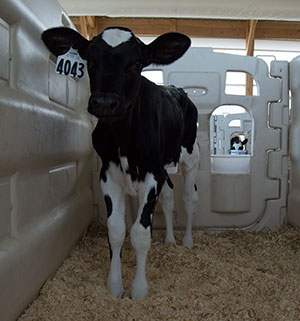 We all know the nuisance flies can be this time of year. Ruining picnics, dirtying white walls, and, perhaps most importantly of all, threatening the productive future of your dairy herd.
We all know the nuisance flies can be this time of year. Ruining picnics, dirtying white walls, and, perhaps most importantly of all, threatening the productive future of your dairy herd. At the recent Joint Annual Meeting of ADSA and ASAS, the University of Georgia's Stephen Nickerson warned attendees that horn flies play a potent role in mastitis infection. Some of the greatest damage is done before an animal ever enters the milking string.
According to Nickerson, horn flies carry a great amount of blame when it comes to mastitis events in heifers and in early lactation cows. Especially in the case of heifers, the disease goes either unnoticed or untreated.
"Most producers consider heifers uninfected," Nickerson shared. However, the truth is far from that myth. Studies have shown 75 percent of heifers experience subclinical mastitis before calving.
Heifers with infected quarters often suffer from poor mammary development with research indicating they produce 10 percent less milk.
So what is the solution to limiting intramammary infections in heifers?
Nickerson says it is twofold.
Initially, preventive action must be taken to limit fly populations on heifers. When looking at the horn fly for example, it feeds 20 or more times per day. One of its favorite feeding grounds is the undeveloped teat. Its bites aggravate the skin while it also serves as a vehicle for mastitis causing bacteria jumping from one heifer to another.
Nickerson suggests farms utilize a mix of common fly prevention options for the most success. That can include fly traps, insecticides, oils, mechanical removal, fly predators, and more.
The second mastitis control option Nickerson preaches is mammary treatment on any heifer that appears susceptible to infection. In heifers treated for Staph. aureus prior to calving, studies have shown a success rate of more than 90 percent.
The worst solution is assuming that flies are simply annoying and do no harm.

The author is an associate editor. She covers feeding and nutrition, youth activities and heads up the World Dairy Expo Supplement. Maggie was raised on a 150-cow dairy near Valley Center, Kansas, and graduated from Kansas State University with degrees in agricultural communications and animal sciences.








